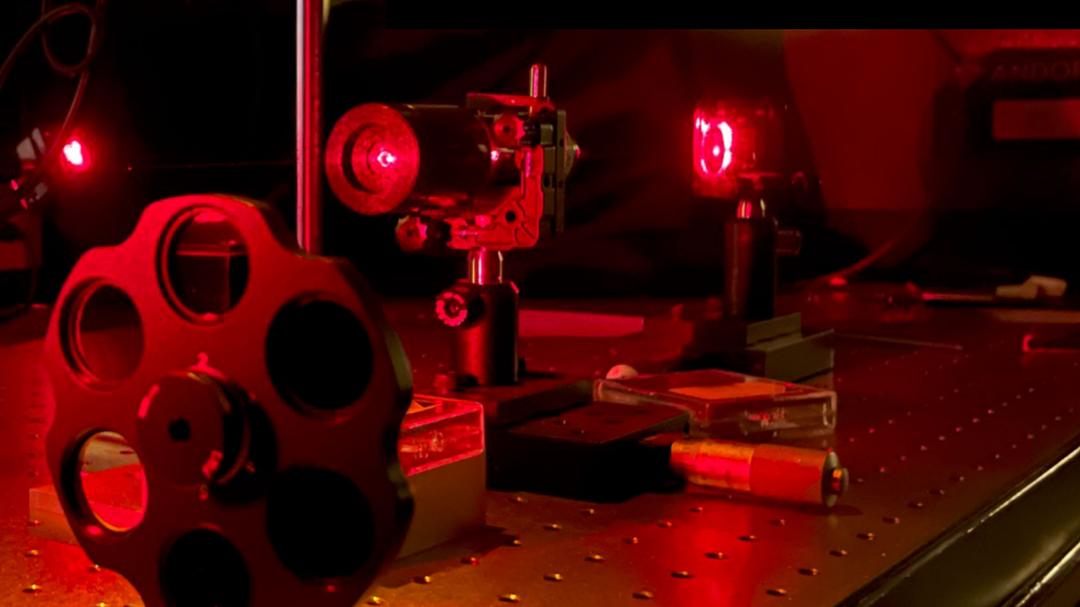Carol Korzeniewski is part of the Department of Energy’s Energy Earthshots Initiative.
The bigger the challenge, the bolder the approach required to confront it.
That is precisely the thinking behind the Energy Earthshots Initiative, in which the U.S. Department of Energy is supporting a handful of innovative research projects meant to stop climate change in its tracks.
And Texas Tech University researchers are right there on the leading edge, contributing to advances in water-splitting electrolysis as part of a project aimed at making hydrogen a more affordable and realistic renewable-energy option.
“The idea is to focus on existing technology and increase the energy conversion through improvements in key materials,” said Carol Korzeniewski, a professor in the Department of Chemistry and Biochemistry. “The technology could then be harnessed to scale up the production of hydrogen gas for use as an alternative transportation fuel and in areas such as manufacturing and energy storage.”
The four-year research effort is being carried out within the Center for Ionomer-based Water Electrolysis (CIWE) under the direction of the Lawrence Berkeley National Laboratory. The CIWE is part of the initiative’s “Hydrogen Shot,” which has the long-range goal of reducing the cost of hydrogen to $1 per kilogram in one decade (current cost is $5 to $7).
“Our Energy Earthshots are game-changing endeavors to unleash the technologies of the clean energy transition and make them accessible, affordable and abundant,” U.S. Secretary of Energy Jennifer M. Granholm said in a news release announcing new support for a series of ambitious projects, including the “Hydrogen Shot.”
In recent years, there has been great commercial interest in hydrogen gas as an energy source. However, hydrogen is often produced from fossil fuels through processes that liberate carbon dioxide, a greenhouse gas that plays a role in climate change. Water electrolyzer technology, on the other hand, uses electricity to generate hydrogen by separating water into its component elements, oxygen and hydrogen (which are gases at ambient temperature and pressure), a process that avoids the undesirable formation of carbon dioxide.
Water electrolyzer technology also benefits from the opportunity to use electricity generated from renewable energy sources, such as wind and sunlight, to produce clean, renewable hydrogen.
The CIWE is examining properties of the ion-conducting polymers, known as ionomers, that are important for electrolyzer operation. Cutting-edge measurement and materials-preparation techniques are being applied to understand factors that affect the performance and lifetime of the polymers and the stability of polymer-catalyst interfaces under electrolyzer operation.
To facilitate data-sharing among teams through the use of machine learning and artificial intelligence tools, the project is also exploring new strategies for storage and access to data from the wide-ranging experiments.
Other institutions involved in the CIWE collaboration are Oak Ridge National Laboratory, Colorado School of Mines, the University of Oregon, the University of California (UC) Berkeley, UC Irvine and UC Merced. Formal work began in January, although the research groups met a few months earlier to formalize long-term goals and interim milestones.
“The contributors to the center have expertise in different areas,” Korzeniewski said. “Some research groups specialize in novel materials preparation, while others have unique characterization or data analysis techniques. We meet regularly to prioritize and synchronize our efforts and establish areas of focus for our research groups.”
For Texas Tech, the project will open incredible new educational horizons for both graduate and undergraduate students.
“It is great for Texas Tech to be recognized as a contributor to such forefront research,” Korzeniewski said. “The project builds on Texas Tech’s many strong programs and will further training opportunities. For example, students will gain exposure to the tremendous, state-of-the-art facilities within the national laboratories.”
The team will investigate interactions within electrolyzer devices on a molecular scale with the goal of creating clean hydrogen that could, in turn, impact air quality.
“Ultimately, the project aims to improve the durability and energy efficiency of water electrolyzers,” Korzeniewski said, “advances that will extend device lifetime and lower the cost of hydrogen production.”

